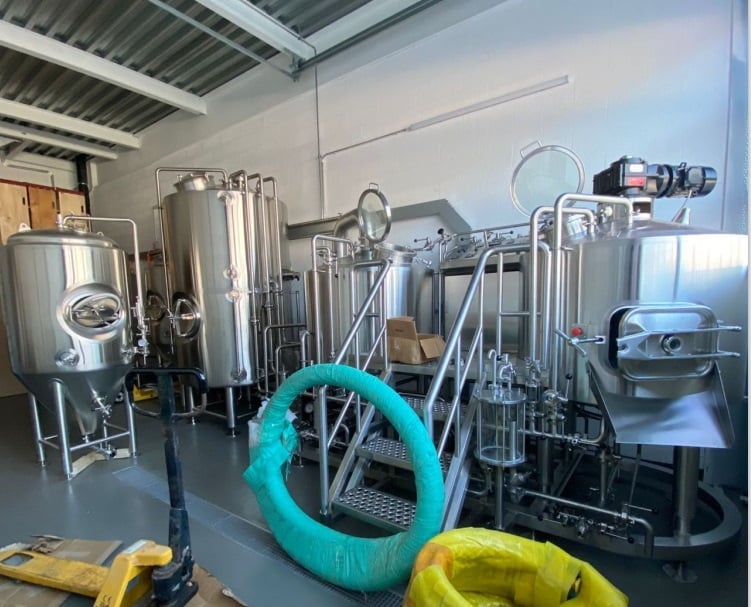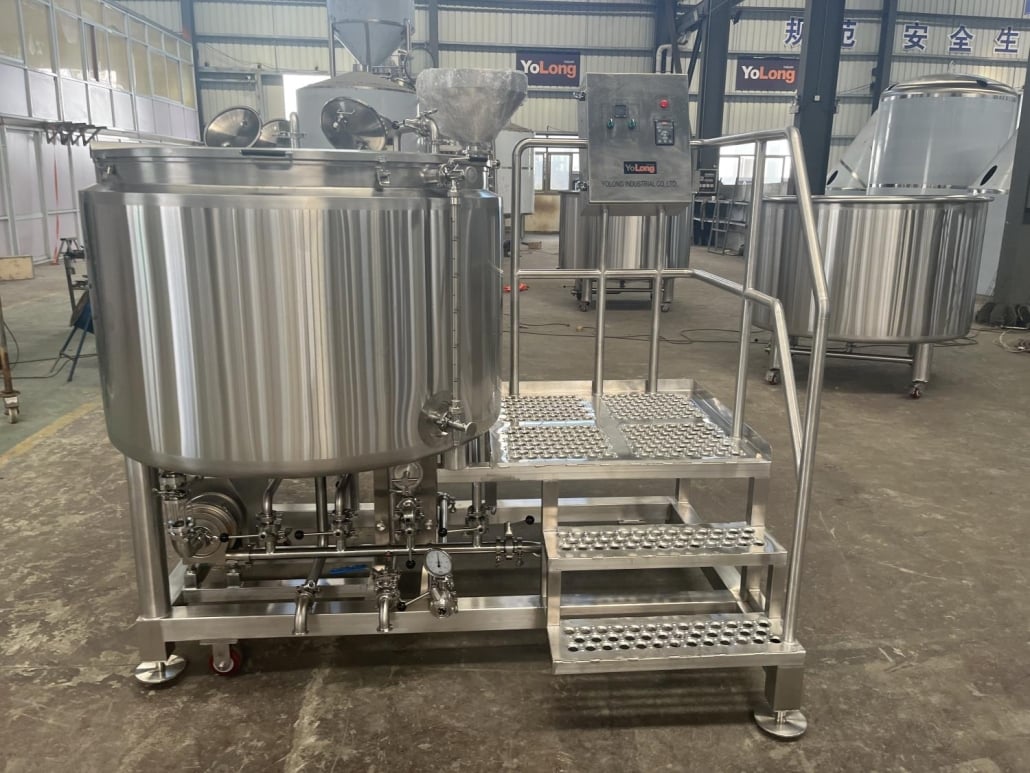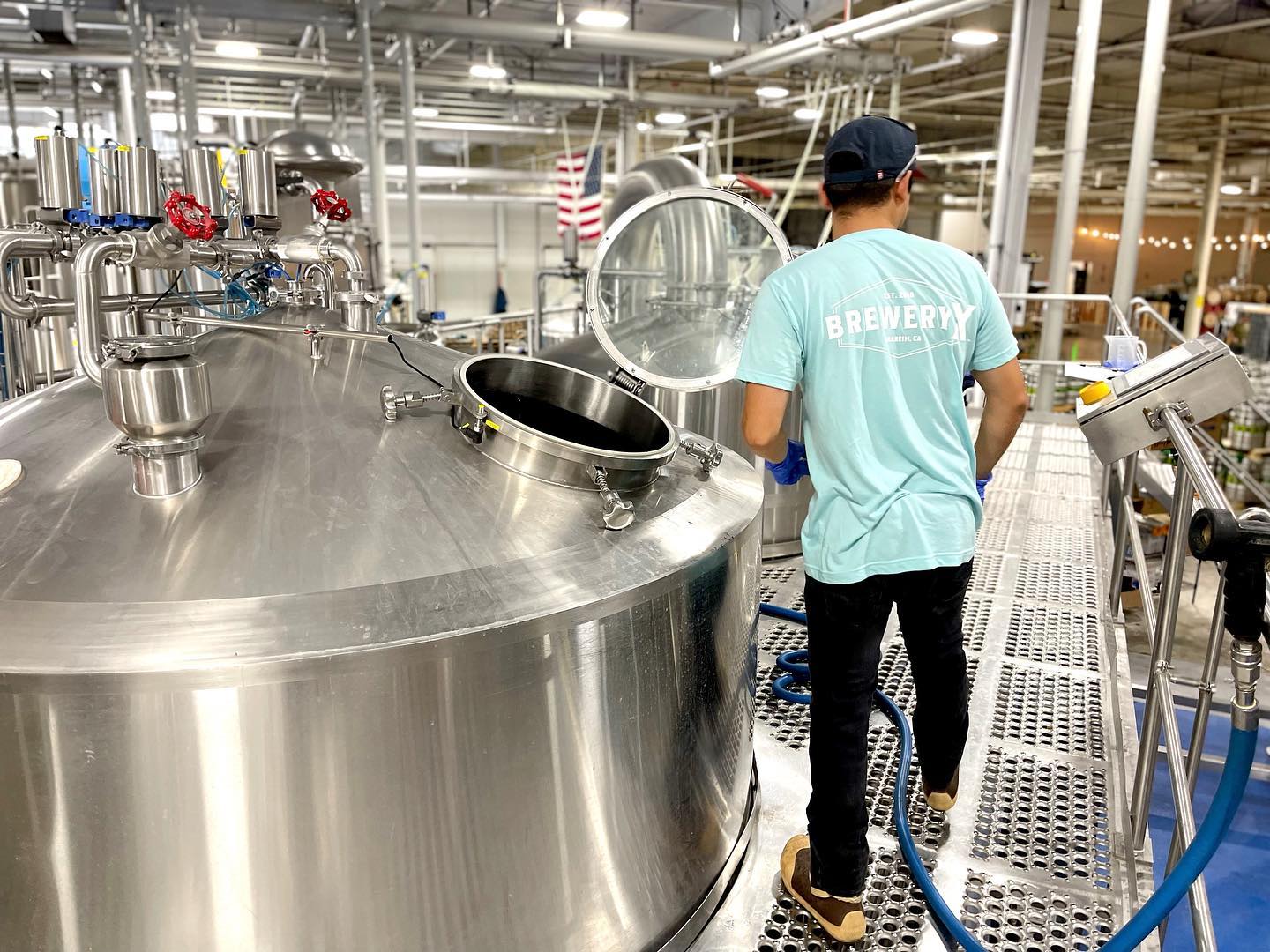Comprehensive Guide to Commercial Brewing Equipment
Commercial brewing equipment is the cornerstone of any brewing operation, from microbreweries to large-scale beer producers. The brewing industry has seen tremendous growth over the past decade, spurred by the craft beer revolution, and it’s essential for anyone in the field to understand the right tools to use for brewing high-quality beer. Whether you’re starting a small brewery or expanding an existing one, knowing the essential brewing equipment, their features, and the brewing process is key to success.
This guide aims to provide an in-depth overview of commercial brewing equipment, detailing the machinery, processes, pricing, installation, maintenance, and everything else you need to know to operate successfully in the commercial brewing space.

Overview of Commercial Brewing Equipment
Brewing beer at a commercial level requires a set of specialized equipment designed for large-scale operations. The core of commercial brewing equipment includes brewing kettles, mash tuns, fermenters, cooling systems, and bottling or kegging lines. Each piece of equipment plays a vital role in the production process, ensuring efficiency and consistency in brewing batches of beer.
Typically, commercial brewing systems range from small 3-barrel setups used by microbreweries to massive 30-barrel systems or more for large-scale brewers. Depending on the brewery’s production goals and space, different equipment setups will be required, along with considerations like brewing capacity, automation, and customization.
Key Benefits of Commercial Brewing Equipment
- Efficiency: Commercial brewing systems allow for larger batch sizes, reducing the time and labor required for beer production.
- Consistency: Automation and advanced controls ensure that each batch meets specific quality standards, which is essential for maintaining a consistent product.
- Scalability: Many systems are modular, meaning they can be expanded as a brewery grows, making them a great long-term investment.
Guide to Commercial Brewing Equipment
The primary equipment involved in commercial brewing can be categorized into different stages of the brewing process. Below, we’ll dive into the core brewing equipment needed for each stage.
1. Brewing Kettles
Brewing kettles, also known as brew kettles, are used for boiling the wort (the liquid extracted from the mashing process) with hops. These kettles are typically made of stainless steel and come with various heating mechanisms such as direct fire, steam, or electric heating.
2. Mash Tuns
The mash tun is where the mashing process occurs, where crushed malted barley is mixed with hot water to convert starches into fermentable sugars. The design of a mash tun can vary but usually features an insulated container to maintain consistent temperatures.
3. Fermentation Tanks
Fermentation tanks, often referred to as fermenters, are where yeast is added to the wort to ferment the sugars and turn them into alcohol. Commercial fermenters are designed to handle the pressures of fermentation and often come with cooling jackets to control the temperature.
4. Heat Exchangers
Heat exchangers are essential for quickly cooling the boiled wort to the appropriate fermentation temperature. Cooling the wort efficiently is critical to avoid contamination and ensure yeast performs optimally during fermentation.
5. Bottling/Kegging Equipment
Once the beer has been brewed and fermented, it needs to be packaged. Bottling and kegging equipment automates the process of filling bottles or kegs with beer, ensuring efficiency and consistency.
Commercial Brewing Equipment Types
To provide a comprehensive view, let’s break down the key types of commercial brewing equipment, focusing on their functions, typical sizes, and applications in commercial brewing.
| Equipment Type | Primary Function | Common Sizes | Applications |
|---|---|---|---|
| Brewing Kettle | Boils wort with hops to extract bitterness and aroma. | 3-barrel, 7-barrel, 10-barrel | Small to large breweries |
| Mash Tun | Converts malt starches into fermentable sugars. | 3-barrel, 15-barrel, 30-barrel | Used in mashing process |
| Fermentation Tank | Ferments wort into beer by adding yeast. | 7-barrel, 15-barrel, 50-barrel | Any scale of brewing |
| Heat Exchanger | Rapidly cools the wort post-boiling. | Various sizes based on system flow | Critical for any brewing setup |
| Bottling/Kegging Line | Automates filling bottles or kegs. | Single or multi-head systems | Packaging beer for distribution |
Commercial Brewing Process
The brewing process is an intricate combination of art and science. With commercial brewing, precision is critical to producing consistent, high-quality beer in large volumes. Here’s a breakdown of the typical brewing process using commercial equipment:
1. Mashing
In the mashing stage, crushed grains (typically malted barley) are mixed with hot water in the mash tun. The goal is to convert the starches in the grains into fermentable sugars, which yeast will later use to produce alcohol. Temperature control in the mash tun is crucial, as it directly affects the sugar extraction efficiency.
2. Lautering
After mashing, the mixture is transferred to the lauter tun, where the liquid wort is separated from the grain husks. The clear wort is then collected, leaving behind the spent grain, which can be repurposed for animal feed or other uses.
3. Boiling
The wort is then moved to the brewing kettle, where it’s boiled for an extended period. During this stage, hops are added to the wort, providing the beer’s bitterness and aroma. The boiling process also sterilizes the wort, killing off any unwanted bacteria or wild yeast.
4. Fermentation
Once boiled, the wort is rapidly cooled using a heat exchanger before it’s transferred to fermentation tanks. Here, yeast is added, and the process of converting sugars into alcohol begins. The fermentation period can last anywhere from several days to several weeks, depending on the type of beer being brewed.
5. Conditioning
After fermentation, some beers require an additional conditioning stage, where they are left to mature and develop their flavors. This can happen in the fermentation tanks or in secondary vessels, depending on the brewery’s specific processes.
6. Packaging
The final step involves packaging the beer for sale, whether it’s bottled, canned, or kegged. Automated bottling or kegging systems are often used in commercial brewing to ensure the beer is sealed in a sanitary and efficient manner.
Design, Layout, and Customization of Commercial Brewing Equipment
When setting up a brewery, the design and layout of equipment are just as important as the equipment itself. The following considerations should be kept in mind when designing a brewery:
| Feature | Details |
|---|---|
| Capacity | Brewers should select equipment that matches their production needs, such as 5-barrel, 10-barrel, or larger systems. |
| Space | Brewery layouts should maximize space efficiency, often placing equipment like fermenters and kettles close together. |
| Automation | Some breweries opt for semi-automated or fully automated systems to streamline processes and reduce labor costs. |
| Customization | Many manufacturers offer customizable brewing systems, allowing brewers to tailor their setup to their specific needs. |
| Aesthetics | The look and feel of a brewery, especially for public-facing spaces, can influence customer perception and brand identity. |
Commercial Brewing Equipment Suppliers and Price Range
Here’s an overview of commercial brewing equipment suppliers and the typical price ranges for various setups. Prices will vary based on capacity, customization options, and other factors.
| Supplier | Equipment Offered | Price Range |
|---|---|---|
| Specific Mechanical Systems | Complete brewing systems, bottling lines | $150,000 – $1,000,000+ |
| Blichmann Engineering | Small to mid-size brewing setups | $30,000 – $250,000 |
| Ss Brewtech | Fermenters, brewhouses, tanks | $50,000 – $500,000 |
| Deutsche Beverage Technology | Large-scale custom systems | $200,000 – $1,500,000+ |
| Portland Kettle Works | Customizable brewhouses and accessories | $100,000 – $800,000 |
Installation, Operation, and Maintenance of Commercial Brewing Equipment
Proper installation and maintenance of commercial brewing equipment are crucial for ensuring longevity and efficiency. Breweries must also understand the operational intricacies of their equipment to produce the best possible beer.
| Aspect | Details |
|---|---|
| Installation | Typically requires professional installers, as well as considerations for power, water, and drainage systems. |
| Operation | Requires trained personnel who understand brewing science and the operation of automated systems. |
| Maintenance | Regular cleaning and servicing are necessary to avoid contamination and equipment failures. Breweries often schedule downtime for deep cleaning between batches. |
| Safety | Breweries must adhere to safety standards, including pressure management for fermenters and hot liquid handling. |
How to Choose a Supplier for Commercial Brewing Equipment
Choosing the right supplier for brewing equipment can make or break your brewing operation. The following table highlights key factors to consider when selecting a supplier.
| Criteria | Details |
|---|---|
| Reputation | Check the supplier’s history, reviews, and customer testimonials to assess their reliability. |
| Customization | Ensure the supplier offers customizable options to fit your specific brewing needs. |
| Support | Look for suppliers that offer ongoing technical support and training for your staff. |
| Price | Compare prices across multiple suppliers but avoid sacrificing quality for lower costs. |
| Delivery Time | Confirm the supplier’s ability to meet your timeline for installation and setup. |
Comparing Pros and Cons of Commercial Brewing Equipment Options
To help breweries make an informed decision, let’s look at the pros and cons of different brewing equipment configurations.
| Equipment Feature | Advantages | Limitations |
|---|---|---|
| Stainless Steel Kettles | Durable, easy to clean, and resistant to corrosion. | Can be more expensive than other materials like copper or aluminum. |
| Fully Automated Systems | Reduces labor costs, ensures consistent production quality. | High upfront cost and may require specialized training for staff. |
| Modular Systems | Scalable as the brewery grows, allowing for gradual investment. | May require significant space, which is a constraint for smaller breweries. |
| Direct Fire Kettles | Typically cheaper and easier to install in smaller breweries. | May lead to uneven heating and require more manual attention. |
| Steam-heated Kettles | More efficient heating, allowing for larger batch sizes. | Requires additional infrastructure like a steam boiler, increasing installation costs. |

FAQ
Here’s a table addressing some frequently asked questions about commercial brewing equipment.
| Question | Answer |
|---|---|
| What is the average cost of commercial brewing equipment? | The cost can range from $50,000 for small-scale setups to over $1,000,000 for larger breweries, depending on customization and capacity. |
| How long does it take to set up a commercial brewery? | It typically takes between 6 months to a year, from the planning stage to the installation of equipment and starting the first brew. |
| What size brewing system should I choose for a startup? | Many startups begin with a 3-barrel to 7-barrel system, which offers flexibility and the ability to brew multiple batches per week. |
| How often should I clean my brewing equipment? | Brewing equipment should be cleaned after each use, with a more intensive cleaning process between production cycles to ensure sanitary conditions. |
| Can I expand my brewing system later? | Yes, many brewing systems are modular and can be expanded as production needs grow. It’s important to plan for future growth during the initial setup. |
Conclusion
Understanding commercial brewing equipment is essential for anyone looking to break into the brewing industry or expand their current brewing operation. From selecting the right equipment for your needs to maintaining it for long-term success, the decisions made in this area will directly impact your brewery’s efficiency, quality, and growth potential.
Breweries of all sizes must weigh their options, considering factors like cost, space, and scalability, to build a setup that works for them. With this guide, you’ll be well-equipped to navigate the commercial brewing equipment landscape and make informed decisions that support your brewing goals.
Share this entry
Interested in learning more about Brewing Systems including additional details and pricing information? Please use the form below to contact us!
YOLONG BREWERY EQUIPMENT FAQS
- Commercial Brewery / Craft Brewery / Microbrewery / Nanobrewery
- What is The Difference Between Craft Beer and Industrial Beer?
- The Bespoke Differences In Custom Brewing Systems
- Everything You Need to Know About Kettle Souring
- How to Choose Brewing Equipment for Your business?
- How To Choose The-Best Partner To Build Your Commercial Microbrewing System?
- Two Detection Sensors That You Need To Use In Your Brewhouse System
- Remote Control Applications in Brewing Equipment/How does it work?
- How To Clean Your Brand New Brewery Tanks?

